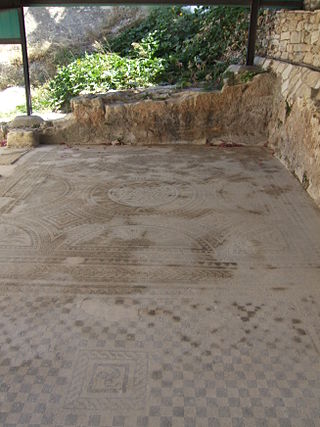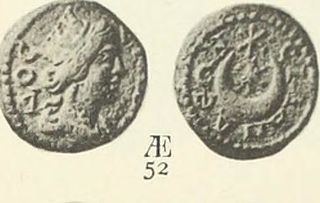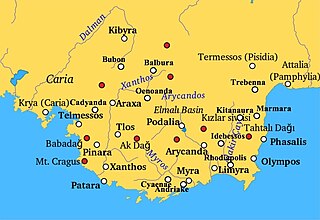Related Research Articles

The Council of Chalcedon was the fourth ecumenical council of the Christian Church. It was convoked by the Roman emperor Marcian. The council convened in the city of Chalcedon, Bithynia from 8 October to 1 November 451 AD. The council was attended by over 520 bishops or their representatives, making it the largest and best-documented of the first seven ecumenical councils. The principal purpose of the council was to re-assert the teachings of the ecumenical Council of Ephesus against the teachings of Eutyches and Nestorius. Such doctrines viewed Christ's divine and human natures as separate (Nestorianism) or viewed Christ as solely divine (Monophysitism).
An ecumenical council, also called general council, is a meeting of bishops and other church authorities to consider and rule on questions of Christian doctrine, administration, discipline, and other matters in which those entitled to vote are convoked from the whole world (oikoumene) and which secures the approbation of the whole Church.

Pope Honorius I was the bishop of Rome from 27 October 625 to his death. He was active in spreading Christianity among Anglo-Saxons and attempted to convince the Celts to calculate Easter in the Roman fashion. He is chiefly remembered for his correspondence with Patriarch Sergius I of Constantinople over the latter's monothelite teachings. Honorius was posthumously anathematized, initially for subscribing to monothelitism, and later only for failing to end it. The anathema against Honorius I became one of the central arguments against the doctrine of papal infallibility.
Pope Vigilius was the bishop of Rome from 29 March 537 to his death. He is considered the first pope of the Byzantine papacy. Born into Roman aristocracy, Vigilius served as a deacon and papal apocrisiarius in Constantinople. He allied with Empress Theodora, who sought his help to establish Monophysitism, and was made pope after the deposition of Silverius. After he refused to sign Emperor Justinian I's edict condemning the Three Chapters, Vigilius was arrested in 545 and taken to Constantinople. He died in Sicily while returning to Rome.

Lampsacus was an ancient Greek city strategically located on the eastern side of the Hellespont in the northern Troad. An inhabitant of Lampsacus was called a Lampsacene. The name has been transmitted in the nearby modern town of Lapseki.
Selymbria, or Selybria (Σηλυβρία), or Selybrie (Σηλυβρίη), was a town of ancient Thrace on the Propontis, 22 Roman miles east from Perinthus, and 44 Roman miles west from Constantinople, near the southern end of the wall built by Anastasius I Dicorus for the protection of his capital. Its site is located at Silivri in European Turkey.
Acmonia or Akmonia is an ancient city of Phrygia Pacatiana, in Asia Minor, now known as Ahat Köyü in the district of Banaz, Uşak Province. It is mentioned by Cicero and was a point on the road between Dorylaeum and Philadelphia. Under the Romans, it was within the conventus iuridicus of Apamea.

Limyra (Lycian: 𐊈𐊚𐊎𐊒𐊕𐊁 was a small city in ancient Lycia on the southern coast of Asia Minor, on the Limyrus River.
Scillium is an ancient city in the Roman province of Africa Proconsularis, Scillium must not be confounded with Silli, or Sililli, in Numidia, the situation of which is unknown nor, as Battandier does, identified with Kasrin, which is Cillium, a see of Byzantium. Its episcopal see was a suffragan of the see of Carthage, capital of the province.

Lyrbe was an ancient city and later episcopal see in the Roman province of Pamphylia Prima and is now a titular see.

Hypaepa or Hypaipa was an Ancient city and (arch)bishopric in ancient Lydia, near the north bank of the Cayster River, and 42 miles from Ephesus, Ephesus and remains a Latin Catholic titular see.
Harpasa was a city and bishopric in ancient Caria in Roman Asia Minor, which only remains a Latin Catholic titular see.

Argyroupoli is a village in the municipality of Rethymno, Rethymno regional unit, Crete, Greece, with a population of 403 and an altitude of 260 m. It was previously known as Lappa or Lampa, Stimboli, and Polis.

Silandus or Silandos was an episcopal city in the late Roman province of Lydia. It was near and gave its name to the present town of Selendi in Manisa Province, Turkey.
Basilinopolis or Basilinoupolis was a town in Bithynia Prima, which obtained the rank of a city under, or perhaps shortly before, Roman Emperor Julian the Apostate, whose mother was Basilina.

Podalia, also spelled Podalaea or Podalaia (Ποδαλαία), Podallia (Ποδαλλία), and Podaleia (Ποδάλεια), was a town of ancient Lycia, mentioned by several ancient authors.
Parnassus or Parnassos was a town in the northern part of ancient Cappadocia, on the right bank of the Halys River, and on or near a hill, to which it owed its name, on the road between Ancyra and Archelais, about 63 miles west of the latter town. It became a bishopric and remains a Roman Catholic titular see.

Justinianopolis in Armenia also known as Iustinianopolis was a Roman and Byzantine era city and bishopric in Lesser Armenia. It has been identified with modern Sivrihisar, Eskişehir Province Central Anatolia, Turkey. It was one of several ancient sites renamed in late Antiquity after Byzantine emperor Justinian I. The city also known as Acilisene and Keltzene.

Isinda was a town of ancient Pisidia.
References
- ↑ Joseph Bingham, The Antiquities of the Christian Church (H.G. Bohn 1856), p. 401
- ↑ Annuario Pontificio 2013 (Libreria Editrice Vaticana, 2013, ISBN 978-88-209-9070-1), p. 922
- 1 2 3 Sophrone Pétridès, "Marciane" in Catholic Encyclopedia (New York 1910)